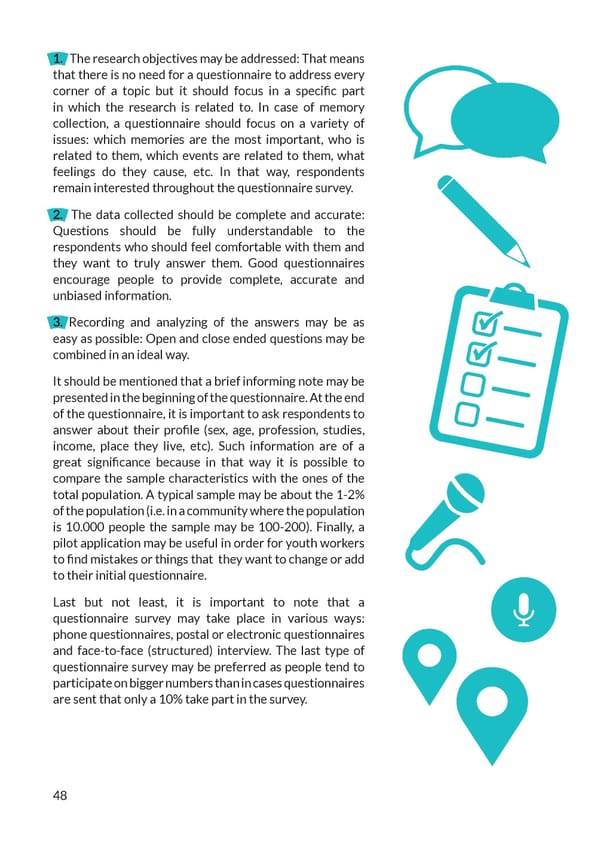1. The research objectives may be addressed: That means that there is no need for a questionnaire to address every corner of a topic but it should focus in a specific part in which the research is related to. In case of memory collection, a questionnaire should focus on a variety of issues: which memories are the most important, who is related to them, which events are related to them, what feelings do they cause, etc. In that way, respondents remain interested throughout the questionnaire survey. 2. The data collected should be complete and accurate: Questions should be fully understandable to the respondents who should feel comfortable with them and they want to truly answer them. Good questionnaires encourage people to provide complete, accurate and unbiased information. 3. Recording and analyzing of the answers may be as easy as possible: Open and close ended questions may be combined in an ideal way. It should be mentioned that a brief informing note may be presented in the beginning of the questionnaire. At the end of the questionnaire, it is important to ask respondents to answer about their profile (sex, age, profession, studies, income, place they live, etc). Such information are of a great significance because in that way it is possible to compare the sample characteristics with the ones of the total population. A typical sample may be about the 1-2% of the population (i.e. in a community where the population is 10.000 people the sample may be 100-200). Finally, a pilot application may be useful in order for youth workers to find mistakes or things that they want to change or add to their initial questionnaire. Last but not least, it is important to note that a questionnaire survey may take place in various ways: phone questionnaires, postal or electronic questionnaires and face-to-face (structured) interview. The last type of questionnaire survey may be preferred as people tend to participate on bigger numbers than in cases questionnaires are sent that only a 10% take part in the survey. 48
 MemoryHandbook new Page 47 Page 49
MemoryHandbook new Page 47 Page 49